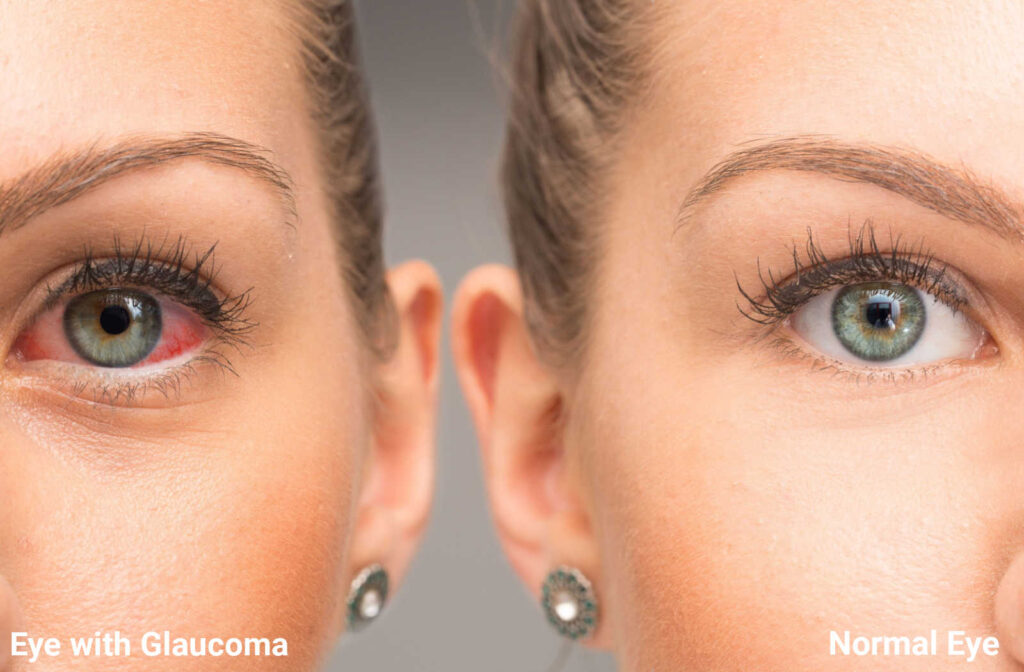What is Glaucoma?
Glaucoma is a group of eye diseases that damage the optic nerve, often due to increased eye pressure.
It can lead to gradual vision loss and even blindness if not treated early.
Many people don’t notice symptoms until the disease is advanced.
It’s more common in people over 60 but can affect anyone.
Regular eye checkups can help detect glaucoma early and protect your vision.

Glaucoma Treatment Options
Dry eye, or dry eye disease (DED), is a common condition caused by an imbalance in the tear film that covers the surface of the eye. This imbalance can lead to irritation, discomfort, and even vision disturbances.
Dry eye can result from various factors, including eye health, anatomical issues, and overall systemic conditions. Proper evaluation of symptoms is important for early diagnosis and effective treatment, which can significantly enhance a patient’s quality of life.
The tear film is made up of three layers—lipid, aqueous, and mucin—each playing a vital role in keeping the eyes moist, protected, and healthy. Understanding these layers is key to managing dry eye effectively.
While glaucoma-related vision loss can’t be reversed, early diagnosis and regular treatment can slow or prevent further damage. The main goal of treatment is to lower the pressure inside the eye (intraocular pressure).
Common Treatments for Glaucoma:
1. Eye Drops
Eye drops are usually the first step in treatment. Some drops help the eye drain fluid more effectively, while others reduce the amount of fluid the eye produces. Depending on your condition, your doctor may prescribe one or more types of drops to reach the target eye pressure.
2. Oral Medications
If eye drops alone aren’t enough, oral medications may be added to further reduce eye pressure.
3. Laser Treatment
Laser procedures can improve fluid drainage or reduce fluid production in the eye, helping to lower pressure.
4. Surgery
For more advanced or unresponsive cases, surgical procedures can create new drainage pathways or relieve pressure in other ways.
In many cases, a combination of these treatments is used. Regular follow-ups with your eye doctor are essential to monitor progress and adjust treatment as needed.
Types of Glaucoma and Their Symptoms
1. Open-Angle Glaucoma
Early stages: Usually no symptoms
Progression: Slow development of patchy blind spots in side (peripheral) vision
Advanced stages: Trouble seeing objects directly in front (central vision)
2. Acute Angle-Closure Glaucoma
Sudden severe headache
Intense eye pain
Nausea or vomiting
Blurred vision and halos around lights
Redness in the eye
3. Normal-Tension Glaucoma
Early stages: No noticeable symptoms
Progression: Gradual blurring of vision
Advanced stages: Loss of peripheral (side) vision
4. Glaucoma in Children
Infants: Cloudy eyes, excessive blinking, and tearing without crying
Older children: Blurred vision, worsening nearsightedness, and frequent headaches
5. Pigmentary Glaucoma
Halos around lights
Blurred vision, especially after exercise
Gradual loss of peripheral vision
FAQs
FAQs – Glaucoma Treatment at American Laser Eye Hospitals, Hyderabad
Glaucoma is a group of eye conditions that damage the optic nerve, often due to increased eye pressure. If not treated early, it can lead to permanent vision loss or blindness.
Glaucoma is usually caused by a buildup of pressure inside the eye due to poor drainage of fluid. However, it can also occur with normal eye pressure (normal-tension glaucoma).
Most types of glaucoma, like open-angle glaucoma, show no early symptoms. As the disease progresses, it can cause blurred vision, loss of peripheral (side) vision, or halos around lights. Acute angle-closure glaucoma may cause severe eye pain, headache, and nausea.
At American Laser Eye Hospitals, we perform comprehensive eye exams including eye pressure measurement, optic nerve evaluation, visual field tests, and advanced imaging like OCT (Optical Coherence Tomography).
We offer cutting-edge diagnostic tools, experienced glaucoma specialists, and advanced laser and surgical treatment options—all under one roof. Our patient-first approach ensures expert care and lifelong eye health support.
